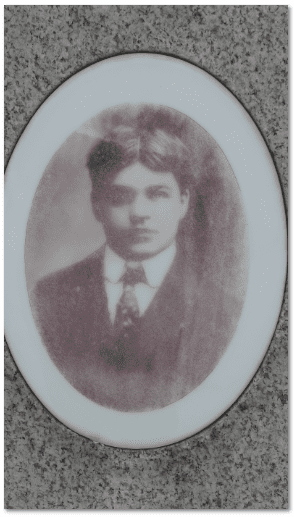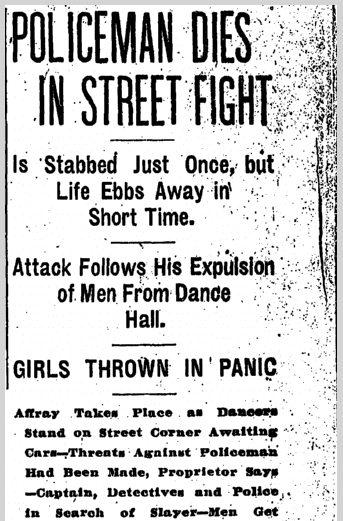Introduction: In this article, Scott Phillips reports a sad discovery when doing his family history research—finding a murder in his family tree. Scott is a genealogical historian and owner of Onward To Our Past® genealogy services.
Ever have one of those eerie experiences that make you just a little bit scared in your family history work? I did and it happened early in my genealogy research when I decided to visit the Woodland Cemetery in Cleveland, Ohio. I had been wanting to visit this cemetery for some time as I have faint memories of visiting there with my family when I was a very young boy. Additionally, in my genealogy research, I have discovered that our family has more than 160 deceased family members resting eternally in Woodland Cemetery.
On this particular cemetery visit I was planning on paying my respects to my great grandfather’s sister, Theresa Sluka. As I arrived at her grave I not only found her gravestone, but I found a substantial family burial plot. I was madly clicking photos and writing down notes as to location, directions, etc., when one of the Sluka family gravestones caught my attention.
Up until that visit, I had never seen a gravestone that held portraits captured in porcelain. The small obelisk in front of me held not one portrait, but two. As I came closer, I realized that for the first time I was gazing at the likenesses of my cousins, Albert and Frank Sluka. Both looked remarkably young and then I noticed that Albert died at just 29 (1877-1907) and his brother, Frank, wearing a uniform of some sort in his portrait, died at only 33 (1878-1912).

It wasn’t an hour later that I was booting up my computer and digging into these two family members. Beginning with Albert, my first stop was at GenealogyBank.com and I was not disappointed. On the first page of search results there was an article from the front page of the Plain Dealer:

I felt as if the headline was screaming at me. I couldn’t believe what I was reading: “Policeman Dies in Street Fight. Is Stabbed Just Once, but Life Ebbs Away in Short Time.”
Only three blocks from the very cemetery where I had been standing only an hour earlier, my cousin, wearing his badge and working as a “Special Policeman,” was stabbed to death by a man he had bounced from a dancehall! The old newspaper article explained the crime scene and reported that his brother was a member of the Cleveland Police Department. My curiosity, being fully piqued at this point, kept me looking further.
Amidst the tragedy of this police murder story, I discovered in another newspaper article that the Cleveland Police did indeed get their man, who was a fellow by the name of Harry Fertel:
The news of Albert Sluka’s murder was carried in other newspapers in other states, such as this historical news article which appeared on the front page of an Indiana paper:
GenealogyBank.com was finding, and I was reading, news stories that covered the initial reports of the assault and crime, and explanations of the impact of the murder on my ancestors including this: “The aged father and mother of the dead policeman are brokenhearted. All day long they sat sobbing beside the casket in the little front room of their home at 5311 McBride Av., S.E…”
I was even learning about my great aunt trying to get her son’s killer sentenced to serve his time in the Penitentiary rather than the Ohio State Reformatory—which itself was none too nice, as revealed in the 1994 film The Shawshank Redemption (the movie was filmed at the Ohio State Reformatory).
Ever since that first day of those discoveries about my cousin Albert and his murder, I have been further augmenting my knowledge of this family tragedy with information available from the coroner’s autopsy report, trial transcripts, jail records, and more.
The one thing I can tell you for certain is that reading those early newspaper articles sure beats any TV courtroom drama I have ever seen, because, as they say, “This Is Family.”
